Ditapis dengan
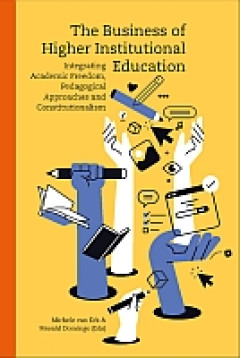
E-book The Business of Higher Institutional Education Integrating Academic Fr…
Higher education is facing increasing challenges. Economic and financial pressures have heightened the strain on the sustainability of higher education institutions (HEIs). These pressures have prompted a shift toward adopting business models and commercial practices to maintain institutional operations. While these changes have enabled some innovations, they have also placed traditional academ…
- Edisi
- -
- ISBN/ISSN
- 9780906785249
- Deskripsi Fisik
- 254 hlmn
- Judul Seri
- -
- No. Panggil
- 378.12 HUN t
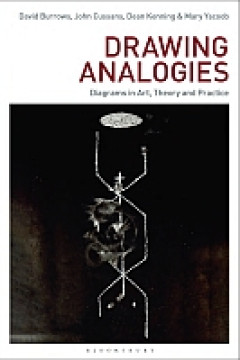
E-book Drawing Analogies Diagrams in Art, Theory and Practice
By exploring diagrams, diagramming and the diagrammatic across a range of disciplines and arts-led practices, this open access book addresses the gap between diagrams as a widely valued mode of visual representation and their under-examined status within arts and art education Informed by Charles Sanders Peirce’s understanding of a diagram as an analogy of relations, Drawing Analogies draws o…
- Edisi
- -
- ISBN/ISSN
- 9781350334755
- Deskripsi Fisik
- 280 hlmn
- Judul Seri
- -
- No. Panggil
- 701.8 BUR d
Agama, Filsafat, & Lingkungan Hidup
Kenyataan krisis ekologi menyerang kita dari banyak arah. Skala dan kompleksitas permasalahan-permasalahan dan kerumitan pemecahan-pemecahan jangka panjang semakin sulit diabaikan. Tak mungkinlah kita tidak terus berusaha mencari cara-cara untuk menemukan jalan keluar dari labirin kemerosotan lingkungan yang terus berjalan. Banyak perspektif, termasuk yang muncul dari agama dan filsafat, diperl…
- Edisi
- Cet. 1
- ISBN/ISSN
- 9796729512
- Deskripsi Fisik
- 308 hlm; 15 x 22,5 cm
- Judul Seri
- -
- No. Panggil
- 304.2 TUC a
Theresia dari Lisieux : Jalan Kecil Menuju Kesucian
Hidup suci, apa yang terlintas dalam benak Anda terkait dengan hal itu? Suatu pemenuhan hukum dan aturan tanpa cacat? Itu berarti suatu prestasi pribadi sebagai bukti betapa kuatnya watak kita? Tetapi, siapa yang mampu menjalani hidup yang demikian? Theresia dari Lisieux mengajak anda untuk menempuh jalan kecil: jalan cinta kasih. Tentu tidak sekadar kata-kata indah, tetapi aksi nyata dan konkr…
- Edisi
- -
- ISBN/ISSN
- 9792113584
- Deskripsi Fisik
- 171 hlm; 13.5 x 21 cm
- Judul Seri
- -
- No. Panggil
- 235 OBB t
E-book The Margins of Late Medieval London, 1430-1540
In 1432, poet John Lydgate was commissioned to commemorate the triumphal entry of Henry VI to London. Setting the scene, Lydgate wrote of ‘this Citee with laude, pris, and glorie/For joye moustred lyke the sonne beem’.1 He described the participants in this civic muster in terms of their clothing: the mayor in red velvet, the sheriffs and aldermen in scarlet furred …
- Edisi
- -
- ISBN/ISSN
- 9781914477034
- Deskripsi Fisik
- 286 hlm
- Judul Seri
- -
- No. Panggil
- 941 BER t
E-book Avocado Production in California : A Cultural Handbook for Growers
Avocado is native to the New World, originating in southern Mexico, Central America and the West Indies. The fruit has long been used as a food by Native Americans in these regions and was know by the Aztecs as “ahuacatl”. Avocado was first mentioned in print in the report Suma de Geographia by Martin Fernandez de Enciso, published in Spain in 1519 (Popenoe and Zentmyer 1997). He observed t…
- Edisi
- -
- ISBN/ISSN
- -
- Deskripsi Fisik
- 74 hlm
- Judul Seri
- -
- No. Panggil
- 634.6 ARP a
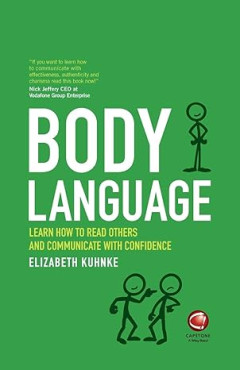
E-book Body Language: Learn How to Read Others and Communicate with Confidence
What does your body language say about you? From strangers on the street, to your closest friends and family – even if you're not speaking, you're saying a lot with your body. Body Language explores the way we use our bodies to communicate, the way we hold ourselves, the way we sit, stand, and point our hands, feet and eyes can all reveal how we are feeling in any given situation. This …
- Edisi
- -
- ISBN/ISSN
- 9780857087041
- Deskripsi Fisik
- 211 halaman
- Judul Seri
- -
- No. Panggil
- 153.6 KUH b
E-book Honorary Doctorate Prof.Mary Beckman
Today we celebrate the 100th anniversary of the Radboud University. This university’s anniversary would not be complete without an honorary doctor in the language sciences. We feel privileged that you agreed to become an honorar y doctor of Radboud University.You have contributed so much to the language sciences. At the start of your career, you…
- Edisi
- -
- ISBN/ISSN
- -
- Deskripsi Fisik
- -
- Judul Seri
- -
- No. Panggil
- 410 BEC h
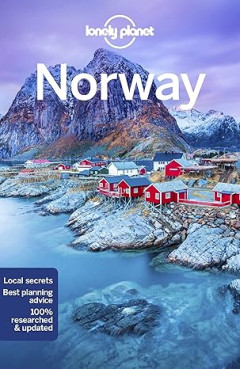
E-book Lonely Planet: Norway
Lonely Planet: The world's leading travel guide publisher Lonely Planet Norway is your passport to the most relevant, up-to-date advice on what to see and skip, and what hidden discoveries await you. Visit Oslo; Norway's cultural capital, hike glacier-strewn high country, or simply hope to catch the elusive Northern Lights -all with your trusted travel companion. Get to the heart of Norway a…
- Edisi
- -
- ISBN/ISSN
- 9781786574657
- Deskripsi Fisik
- 995 halaman, ilus.
- Judul Seri
- -
- No. Panggil
- 910 HAM l
E-book Everyday Streets : Inclusive approaches to understanding and designing…
Everyday streets are both the most used and the most undervalued of cities’ public spaces. They constitute the inclusive backbone of urban life – the chief civic amenity – though they are challenged by optimisation processes. Everyday streets are as profuse, rich and complex as the people who use them; they are …
- Edisi
- -
- ISBN/ISSN
- 9781800084407
- Deskripsi Fisik
- 378 hlm
- Judul Seri
- -
- No. Panggil
- 307.76 ADL e

E-book Querying Childhood: Feminist Reframings
This book critically examines assumptions about age, women, and gender. Amidst all the attention that has been granted to difference and inequality, however uneven and unsatisfactory in terms of class and caste, race and ethnicity, sexuality and gender, disability, religion, and nation, questions of age and its importance for feminism have been less well defined. Drawing on recent literature on…
- Edisi
- -
- ISBN/ISSN
- 9781032679037
- Deskripsi Fisik
- 340 halaman
- Judul Seri
- -
- No. Panggil
- 306.85 JOH q
E-book Driving Digital Transformation : Lessons from Seven Developing Countries
The road’s potholes were a stark contrast to the destination of the coach-loadof young women driving over them: a brand new building housing one ofBangalore’s many internet-enabled service companies—this one providingaccountancy support services—newly built on the outskirts of the city. Thiscontrast is not something we saw only in India. In the overcrowded streets ofIndonesia’s capita…
- Edisi
- -
- ISBN/ISSN
- 9780192872845
- Deskripsi Fisik
- 241 hlm
- Judul Seri
- -
- No. Panggil
- 338.9 NDU d
E-book Rivers of the Anthropocene
“There was no such thing as the Scientific Revolution, and this is a book about it” (Shapin 1996, 1). So began Stephen Shapin’s The Scientific Revolution, a work, con-cise and smart, that embodied an approach to the history of science termed “the social construction of science.” Shapin argued that if we are going to talk about a “scientific revolution,” then we need to see it not …
- Edisi
- -
- ISBN/ISSN
- 9780520967939
- Deskripsi Fisik
- 244 hlm
- Judul Seri
- -
- No. Panggil
- 550 BEN r
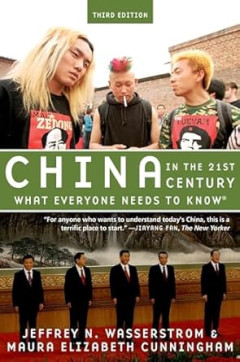
E-book China in the 21st Century: What Everyone Needs to Know®
In this fully revised and updated third edition of China in the 21st Century: What Everyone Needs to Know®, Jeffrey N. Wasserstrom and Maura Elizabeth Cunningham provide cogent answers to urgent questions regarding the world's newest superpower and offer a framework for understanding China's meteoric rise from developing country to superpower. Framing their answers through the historical legac…
- Edisi
- -
- ISBN/ISSN
- 9780190659080
- Deskripsi Fisik
- 187 halaman
- Judul Seri
- -
- No. Panggil
- 951 WAS c

E-book Drones: What Everyone Needs to Know
Drones quite possibly represent the most transformative military innovation since jet engines and atomic weaponry. No longer do humans have to engage in close military action or be in the same geographical vicinity as the target. Now, through satellite imaging and remote technology, countries such as the United States can destroy small targets halfway around the world with pinpoint accuracy. …
- Edisi
- -
- ISBN/ISSN
- 9780190235352
- Deskripsi Fisik
- 225 halaman
- Judul Seri
- -
- No. Panggil
- 629.13 ELI d

What Is a Family?: Answers from Early Modern Japan
What is a family? The essays gathered here explore disparate family histories in early modern Japan, attending variously to the samurai elite, agrarian villagers, urban merchants, communities of outcastes, and the circles surrounding priests, artists, and scholars. They draw on diverse sources—from population registers and legal documents to personal letters and diaries, from genealogies and …
- Edisi
- -
- ISBN/ISSN
- 9780520316089
- Deskripsi Fisik
- 291 halaman
- Judul Seri
- -
- No. Panggil
- 306.81 BER w

E-book Healthy Ageing : A Capability Approach to Inclusive Policy and Practice
Healthy ageing is the ideal trajectory from birth to death. As we reach older age, physical changes are inevitable, but it is not simply the effect of these changes that makes ageing healthy or unhealthy. An older person may have many years of inca-pacity as they decline slowly towards death. Or they may be well and functioning happily until a very rapid shift into loss of life (the ideal of dy…
- Edisi
- -
- ISBN/ISSN
- 9781315639093
- Deskripsi Fisik
- 180 hlm
- Judul Seri
- -
- No. Panggil
- 610.28 STE h
E-book Cambridge IGCSE Biology Coursebook
This book has been written to help you to do well in your Cambridge International Examinations IGCSE Biology examination. We hope that you enjoy using it. The book can also be used with the Cambridge O level Biology syllabus. There are quite a lot of definitions in the IGCSE syllabus that you need to learn by heart. These are all in this book, at appropriate points in each chapter, inside boxes…
- Edisi
- 3rd ed
- ISBN/ISSN
- 9781107614796
- Deskripsi Fisik
- 350 hlm
- Judul Seri
- -
- No. Panggil
- 570 JON c
E-book What Photographs Do: The Making and Remaking of Museum Cultures
What are photographs ‘doing’ in museums? Why are some photographs valued and others not? Why are some photographic practices visible and not others? What value systems and hierarchies do they reflect? What Photographs Do explores how museums are defined through their photographic practices. It focuses not on formal collections of photographs as accessioned objects, be they ‘fine art’ or…
- Edisi
- -
- ISBN/ISSN
- 9781800082984
- Deskripsi Fisik
- 357 hlm
- Judul Seri
- -
- No. Panggil
- 069 EDW w

E-book Classics: A Very Short Introduction
This Very Short Introduction to Classics links a haunting temple on a lonely mountainside to the glory of ancient Greece and the grandeur of Rome, and to Classics within modern culture-from Jefferson and Byron to Asterix and Ben-Hur. We are all Classicists - we come into touch with the Classics daily: in our culture, politics, medicine, architecture, language, and literature. What are the tr…
- Edisi
- -
- ISBN/ISSN
- 9780192853851
- Deskripsi Fisik
- 161 halaman
- Judul Seri
- -
- No. Panggil
- 801 BEA c
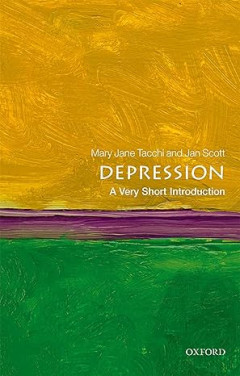
E-book Depression: A Very Short Introduction
What is depression? What is bipolar disorder? How are they diagnosed and how are they treated? Can a small child be diagnosed with depression and treated with antidepressants - and should they be? Covering depression, manic depression, and bipolar disorder, this Very Short Introduction gives a brief account of the history of these concepts, before focussing on the descriptions and understand…
- Edisi
- -
- ISBN/ISSN
- 9780199558650
- Deskripsi Fisik
- 286 halaman
- Judul Seri
- -
- No. Panggil
- 155.9042 TAC d
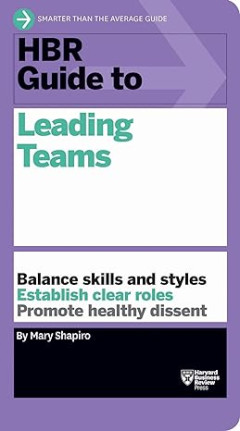
E-book HBR Guide to Leading Teams
Great teams don’t just happen. How often have you sat in team meetings complaining to yourself, “Why does it take forever for this group to make a simple decision? What are we even trying to achieve?” As a team leader, you have the power to improve things. It’s up to you to get people to work well together and produce results. Written by team expert Mary Shapiro, the HBR Guide to …
- Edisi
- -
- ISBN/ISSN
- 9781633690417
- Deskripsi Fisik
- 143 halaman
- Judul Seri
- -
- No. Panggil
- 303.34 SHA h
E-book Curious Encounters : Voyaging, Collecting, and Making Knowledge in the…
Our histories of global exploration and encounter in the long eigh-teenth century are often drawn from the scientific voyages of discovery and their richly illustrated books, like John Ross’s A Voyage of Discovery(1819). Ross voyaged in the Enlightenment tradition of Bougainville and Cook, who had returned to Europe in ships laden with knowledge in the form …
- Edisi
- -
- ISBN/ISSN
- 9781487503673
- Deskripsi Fisik
- 255 hlm
- Judul Seri
- -
- No. Panggil
- 909.81 BRA c
E-book Russian Energy Strategy in the Asia-Pacific : Implications for Australia
Given Australia’s lack of energy security strategy, it is not surprising that the country is void of institutional knowledge and know-how of Russian foreign energy strategy. The ‘lucky country’ as it were, relies entirely on sea lines of communication to the north to supply fuel and to export Australian coal and natural gas. Australia has entered the 2020s as the world’s largest liquefi…
- Edisi
- -
- ISBN/ISSN
- 9781760463397
- Deskripsi Fisik
- 241 hlm
- Judul Seri
- -
- No. Panggil
- 320.12 BUC r
E-book The Chamber Musician in the Twenty-First Century
In recent research, there has been growing emphasis on the collaborative, social, and collective nature of musical behaviour and practices. Among the emerging hypotheses in this connection are the idea that listening to music is always listening together and being with the other; that music making is a matter of intercorporeality, mutuality, and emphatic attunement; and that creative agency in …
- Edisi
- -
- ISBN/ISSN
- 9783038975632
- Deskripsi Fisik
- 334 hlm
- Judul Seri
- -
- No. Panggil
- 785 CAM t
E-book Guitar All in One for Dummies
Though the guitar as we know it is only about a century and a half old, its roots as a plucked stringed instrument go back deep into history. Many ancient folk instruments have followed the basic strings-stretched-overfretboard-and-played-with-fingers design for thousands of years, and the guitar is in some ways the culmination of that legacy. It seems humans have always had something like the …
- Edisi
- -
- ISBN/ISSN
- 9780470481332
- Deskripsi Fisik
- 699 hlm
- Judul Seri
- -
- No. Panggil
- 787.8 CHA g
E-book Medieval Londoners : Essays to mark the eightieth birthday of Caroline…
Caroline Barron leads the field on medieval London and her work on its politics, governance, economy and fabric has greatly enhanced our understanding of the late medieval city. It is, however, her interest in and enthusiasm for the men and women who lived and worked in, or were visitors to, the capital, and her ability to inspire that interest and enthusiasm …
- Edisi
- -
- ISBN/ISSN
- 9781912702152
- Deskripsi Fisik
- 382 hlm
- Judul Seri
- -
- No. Panggil
- 824 BER m
E-book Remote Capture : Digitising Documentary Heritage in Challenging Locations
Digitisation is complex and although there are many resources available, there is nothing that quite targets the specialist needs of any current or prospective EAP applicant. A potential EAP grant holder needs to become an expert in so many disciplines: they are required to be competent at project management; be able to accurately assess the amount of material t…
- Edisi
- -
- ISBN/ISSN
- 9781783744756
- Deskripsi Fisik
- 194 hlm
- Judul Seri
- -
- No. Panggil
- 770 BUT r
E-book The Terms of Our Surrender : Colonialism, Dispossession and the Resist…
Based on the experience of the Innu resident in Quebec and Labrador, this book is intended to be a work of advocacy for the full extent of the rights of indigenous peoples whose landholdings have been devastated in the Canadian land claims process. As things stand at present, the Innu who are resident in government villages in Quebec have lost their rights to …
- Edisi
- -
- ISBN/ISSN
- 9781912250486
- Deskripsi Fisik
- 372 hlm
- Judul Seri
- -
- No. Panggil
- 341.48 CAS t
E-book Illustrated History of Landscape Design
- Edisi
- -
- ISBN/ISSN
- 97800470289334
- Deskripsi Fisik
- 275 halaman, ilus.
- Judul Seri
- -
- No. Panggil
- 712.028 BOU i
- Edisi
- -
- ISBN/ISSN
- 97800470289334
- Deskripsi Fisik
- 275 halaman, ilus.
- Judul Seri
- -
- No. Panggil
- 712.028 BOU i
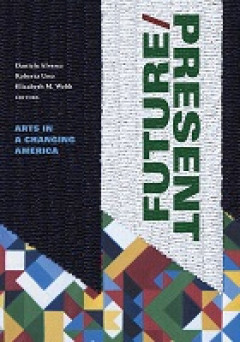
E-book FUTURE/PRESENT: Arts in a Changing America
Building on five years of national organizing by Arts in a Changing America, an artist-led initiative that challenges structural racism in the art world, FUTURE/PRESENT includes a range of poetry, essays and criticism, visual and performance art, artist manifestos, interviews, and reflections on community practice.
- Edisi
- -
- ISBN/ISSN
- 9781478025160
- Deskripsi Fisik
- 569 halaman
- Judul Seri
- -
- No. Panggil
- 807 ALV f
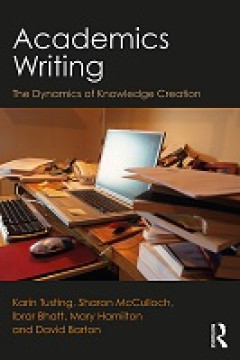
E-Book Academics Writing: The Dynamics of Knowledge Creation
Academics Writing recounts how academic writing is changing in the contemporary university, transforming what it means to be an academic and how, as a society, we produce academic knowledge. Writing practices are changing as the academic profession itself is reconfigured through new forms of governance and accountability, increasing use of digital resources, and the internationalisation of high…
- Edisi
- -
- ISBN/ISSN
- 9780429582592
- Deskripsi Fisik
- 179 halaman
- Judul Seri
- -
- No. Panggil
- 306.44 TUS a
E-book Butterflies : Taking Science to the Backyard
Papilionidae, Pieridae, Lycaenidae, and Nymphalidae. Close to 750 species inhabit the United States and Canada, most notably the Monarch and Regal Fritillary can be found in Nebraska. Approximately 3% of butterfly species are threatened with extinction. This decline in butterfly populations is attributed primarily to habitat loss due to urbanization and agriculture. As populations continue to d…
- Edisi
- -
- ISBN/ISSN
- -
- Deskripsi Fisik
- 78 hlm
- Judul Seri
- -
- No. Panggil
- 595.7 MUL b

E-Book The Ex Files (Ocean View #1)
In fact, it’s her job. A favor for a friend in college who was afraid she’d been catfished soon turned into a full-blown business. Now, as the owner of The Ex Files, a matchmaking service based Ocean View, she dates men nearly every day of the week in order to vet them, assuring the matches she makes are perfectly informed and free of heartache. With her job comes pitfalls, though: every…
- Edisi
- -
- ISBN/ISSN
- 9798985833805
- Deskripsi Fisik
- 278 halaman
- Judul Seri
- -
- No. Panggil
- 823 MOR t
E-book Illustration
As for colours I would say I tend not to use them. I usually focus on black and white images, sometimes with various tones of gray, but when I do use colours I like to use toned down, unsaturated colours to create a more atmospheric feeling in my work.
- Edisi
- -
- ISBN/ISSN
- -
- Deskripsi Fisik
- 54 hlm
- Judul Seri
- -
- No. Panggil
- 741.6 BID i
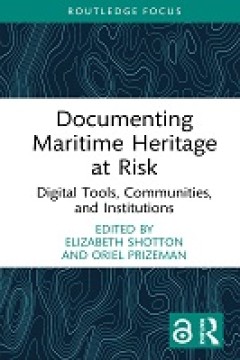
E-Book Documenting Maritime Heritage at Risk: Digital Tools, Communities, and…
Documenting Maritime Heritage at Risk addresses the risks posed to coastal piers and quays due to climate change, the urgent need for documentation and attendant questions regarding long-term conservation, and the role communities could have in this endeavour. Case studies from communities, researchers, and national agencies offer insights into the documentation and analysis of coastal heritage…
- Edisi
- -
- ISBN/ISSN
- 9781032472089
- Deskripsi Fisik
- 121 halaman
- Judul Seri
- -
- No. Panggil
- 551.45 SHO d
E-book Fashion Week Report Spring Summer 2021
Choosing this quote from Mary Shelley to open this Fashion Week report is no accident. It reflects the state of mind in which this Fashion Month was announced and how we approached it. Like a sort of "reset" button for an industry hit hard by an unprecedented pandemic that we no longer need to name ... However, it seems that, despite the notable absence of big names in fashion, who for various …
- Edisi
- -
- ISBN/ISSN
- -
- Deskripsi Fisik
- 61 hlm
- Judul Seri
- -
- No. Panggil
- 746.92 SHE f
E-book Step-up to Medicine
It is hard to believe that it has been 14 years since the first edition of Step-Up to Medicine was published. Now in its fifth edition, the success of this book has always been linked to its in-depth, yet concise coverage of every medical topic that a student will encounter during the clinical years of medical school and corresponding NBME shelf examinations. This fifth edition of Step-Up to Me…
- Edisi
- 5th ed.
- ISBN/ISSN
- 9781975103620
- Deskripsi Fisik
- 1323 hlm
- Judul Seri
- -
- No. Panggil
- 615.5 AGI s
E-book A Memory of Ice : The Antarctic Voyage of the Glomar Challenger
Growing up in Western Australia, in the southwestern corner of that huge and sparsely populated state, it was difficult to be unaware of the bizarre splendour, diversity and colour of the local vegetation. This, the South West Botanical Province, is now recognised as one of 25 biodiversity hotspots in the world. Its abundance of flowering plants, possibly over 9,000 species, is greater than alm…
- Edisi
- -
- ISBN/ISSN
- 9781760462956
- Deskripsi Fisik
- 246 hlm
- Judul Seri
- -
- No. Panggil
- 998 TRU a
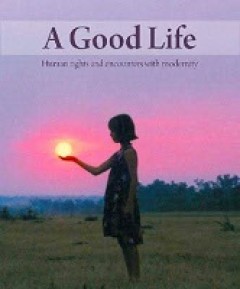
E-Book A Good Life: Human Rights and Encounters with Modernity
This book is a story. It’s a story about ordinary people in very different parts of the world dealing with rapid change in the late twentieth and early twenty-first
- Edisi
- -
- ISBN/ISSN
- 9781922144669
- Deskripsi Fisik
- 314 halaman
- Judul Seri
- -
- No. Panggil
- 909.82 EDM a
E-book Encyclopedia of the Horse
Until the enf of the eighteenth century, two races of the wild horse Equus ferus, existed in Europe and the Russian steppes, and the Mongolian wild horse, or Przewalski's horse, in Mongolia wild horse, or Przewalksi's horse in Mongolia. These two races were the relics of vast populations of wild equines that inhabited virtually the whole of Europe, Asia, and North America at the close of the la…
- Edisi
- -
- ISBN/ISSN
- 0753706725
- Deskripsi Fisik
- 188 hlm
- Judul Seri
- -
- No. Panggil
- 599.6 BRO e

E-Book Europe’s Islamic Legacy: 1900 to the Present
Seven new scholarly essays present original research that includes rare historical and photographic materials highlighting the significance of Islamic civilization and its vexed legacy in a variety of contemporary European countries and challenging the perception of European identity as exclusively Christian. This volume unearths a rich, complex history of relationships between Muslims and Chri…
- Edisi
- -
- ISBN/ISSN
- 9789004510722
- Deskripsi Fisik
- 197 halaman
- Judul Seri
- -
- No. Panggil
- 297.6
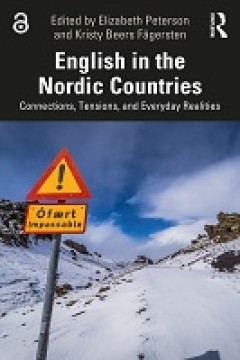
E-Book English in the Nordic Countries: Connections, Tensions, and Everyday R…
People in the Nordic states – Norway, Sweden, Finland, Denmark, and Iceland – rank as among the most proficient speakers of English in the world. In this unique volume, international experts explore how this came to be, what English usage and integration looks like in different spheres of society and the economy in these countries, and the implications of this linguistic phenomenon for lang…
- Edisi
- -
- ISBN/ISSN
- 9781032224671
- Deskripsi Fisik
- 261 halaman
- Judul Seri
- -
- No. Panggil
- 410 PET e
E-book Classical Mythology and Children’s Literature : An Alphabetical Odyssey
As a result, a unique amalgam was formed. On the one hand, the Alpha-betical Odyssey is a guide showing the breadth of the creative field of children’s literature that blends the ancient and the modern for readers of all ages, thereby making it possible for them to travel beyond time, to learn about new things, but also to rediscover what may already seem familiar. Short chapters on clas-sica…
- Edisi
- -
- ISBN/ISSN
- 9788323557296
- Deskripsi Fisik
- 473 hlm
- Judul Seri
- -
- No. Panggil
- 398.2 HAL c
Six Crimson Cranes
Bagaimana rasanya punya enam orang kakak laki-laki? Merasa dilindungi? Selalu dijaili? Setidaknya itu yang dirasakan Putri Shiori, putri bungsu Kaisar Kiata. Sayangnya, hari-harinya yang riuh bersama keenam kakak lelakinya tak bisa berlangsung lama. Karena sebuah tragedi tak terduga, Raikama, sang ibu tiri menyihir keenam kakak Shiori menjadi bangau. Shiori pun dikutuk nyaris bisu. Jika satu ka…
- Edisi
- -
- ISBN/ISSN
- 9786231861214
- Deskripsi Fisik
- illust, 400 hlm; 15 x 23.5 cm
- Judul Seri
- -
- No. Panggil
- 823 LIM s
E-book The Writing Public : Participatory Knowledge Production in Enlightenme…
On February 12, 1786, a letter to the editor appeared in the Affiches du Beauvaisis that described how readers interacted with the newspaper. The anonymous writer explained to the editor, “Your weekly papers are a sort of literary arena, where every athlete should have the right to present oneself, to choose an adversary and to combat them, without however, straying f…
- Edisi
- -
- ISBN/ISSN
- 9781501753589
- Deskripsi Fisik
- 287 hlm
- Judul Seri
- -
- No. Panggil
- 070.442 BON t
E-book You Can Help Your Country : English children's work during the Second …
One of the many exhortations to children to help with the war effort was issued by the Ministry of Information in 1941; its opening paragraph is our opening quotation and its title, which we have borrowed for this book, is ‘You Can Help Your Country’. In the book, we address a neglected topic that is, nevertheless, a part of the history of childhood in twentieth-cent…
- Edisi
- -
- ISBN/ISSN
- 9781787356726
- Deskripsi Fisik
- -
- Judul Seri
- -
- No. Panggil
- 940.53 MAY y
E-book Sartorial Fandom : Fashion, Beauty Culture, and Identity
Our tastes as consumers and fans are reflected back to us whenever we open our closets. We immediately see our go-to clothing labels, often represent-ing years of fannish brand loyalty. We rifle through leaning towers of folded T-shirts featuring an eclectic mix of fan-designed and licensed imagery ref-erencing beloved media objects. As we move through the world, these forms…
- Edisi
- -
- ISBN/ISSN
- 9780472903382
- Deskripsi Fisik
- 295 hlm
- Judul Seri
- -
- No. Panggil
- 646.3 AFF s

E-book A Memory of Ice
"In the southern summer of 1972/73, the Glomar Challenger was the first vessel of the international Deep Sea Drilling Project to venture into the seas surrounding Antarctica, confronting severe weather and ever-present icebergs. A Memory of Ice presents the science and the excitement of that voyage in a manner readable for non-scientists. Woven into the modern story is the history of early expl…
- Edisi
- -
- ISBN/ISSN
- 9781760462949
- Deskripsi Fisik
- viii, 246hlm. : ill.
- Judul Seri
- -
- No. Panggil
- 551.4608 TRU a
E-book Laws of the Sea : Interdisciplinary Currents
Most legal thinkers and practitioners view law as fundamentally terrestrial. Indeed, law—in its Eurocentric iteration at least—ultimately imagines itself as beginning and ending on terra firma. Land is perceived as a fully historicized, mapped, and regulated space that stands in stark opposition to the seemingly a-temporal, empty, and unruly sea.…
- Edisi
- -
- ISBN/ISSN
- 9781003205173
- Deskripsi Fisik
- -
- Judul Seri
- -
- No. Panggil
- 341.4 DEL l
 Karya Umum
Karya Umum  Filsafat
Filsafat  Agama
Agama  Ilmu-ilmu Sosial
Ilmu-ilmu Sosial  Bahasa
Bahasa  Ilmu-ilmu Murni
Ilmu-ilmu Murni  Ilmu-ilmu Terapan
Ilmu-ilmu Terapan  Kesenian, Hiburan, dan Olahraga
Kesenian, Hiburan, dan Olahraga  Kesusastraan
Kesusastraan  Geografi dan Sejarah
Geografi dan Sejarah